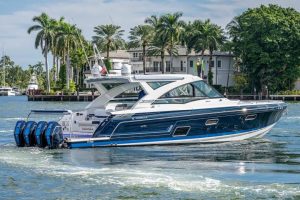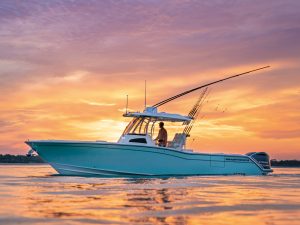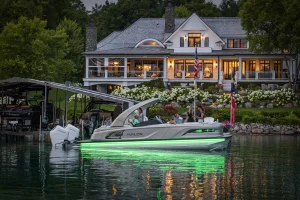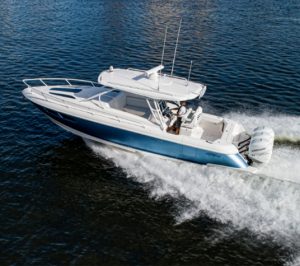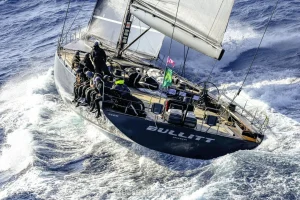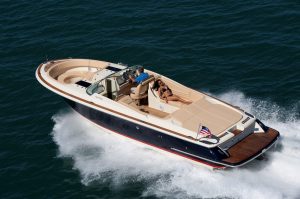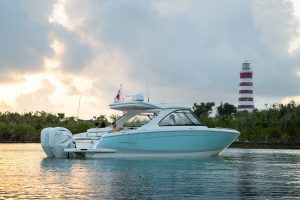All About Skiff Boats: Essential Guide for Enthusiasts
Skiff boats are a versatile and affordable option for those who enjoy spending time on the water. With their simple design and functionality, skiffs cater to a variety of activities like fishing, crabbing, clamming, or exploring small bays and tributaries (Boats.com). Typically ranging from 12 to 25 feet in length and powered by an outboard motor, these lightweight boats are well-suited for both fresh and saltwater pursuits (Boat Trader).
Characterized by a curved or pointed bow and a flat stern, skiffs can have flat-bottomed hulls, making them ideal for navigating shallow waters (Boat Safe). As skiff boats are generally small, open, and have minimal electrical or plumbing systems, they are both easy to maintain and budget-friendly. Often equipped with a few seats and fishing rod holders, skiffs are a popular choice for anglers and adventurers seeking simplicity and on-water enjoyment.
History of Skiff Boats
Skiff boats have a rich history, stemming from their origins as working boats in Northern Europe and Britain. These boats were known for their practicality and versatility, with many fine examples such as the Lock Fyne skiff, the Fifie skiff, and the Scaffie and Zulu skiffs emerging as popular sailing and rowed fishing boats (Britannica).
In the early 20th century, the Skiff Craft boat company was born, founded in 1904 as the Henry Boat Company by two Canadian boat builders, Victor and Stanley Henry (Mahogany Bay). This company specialized in creating skiffs tailored for various purposes, ranging from recreational uses to commercial fishing applications.
Over the years, skiff boats have evolved significantly, with the advancement in boat-building materials and techniques. They have transformed from heavily crewed, canvassed vessels to more streamlined designs with the use of lighter, durable materials (Wikipedia). Nowadays, skiffs are known for their simplicity and are available in many different sizes, shapes, and styles, catering to the needs of both freshwater and saltwater fishing enthusiasts (boats.com).
Despite the changes throughout the years, the core characteristics of skiff boats remain consistent: functionality, versatility, and ease of use. These boats continue to serve their role in various river, lake, and bay environments, providing a reliable and accessible option for boaters and anglers alike (Boat Trader).
Types of Skiff Boats
Skiff boats are versatile watercraft that come in various designs and sizes, suitable for different purposes such as fishing, crabbing, or leisurely cruising. In this section, we will explore some of the common types of skiff boats.
One popular type of skiff boat is the flat-bottom rowboat, characterized by its simple, lightweight construction and flat hull. Flat-bottom rowboats are easy to maneuver and perfect for calm, shallow waters. They are often used for fishing and exploring small waterways (Boat Trader).
Flats skiffs are designed for navigating the shallow waters of coastal areas and marshlands. They typically have a shallow draft and a flat or slightly rounded hull, which allows them to glide smoothly over the water. These skiffs are popular among anglers, as they can easily access shallow fishing areas (boats.com).
Inflatable skiffs offer great stability and portability. Made from durable materials like PVC, these boats are lightweight and easy to transport. They excel at providing a stable platform for fishing, clamming, or crabbing, while their inflatable nature makes them less likely to tip over in calm waters (Daily Boats).
On the other hand, rigid skiffs are constructed from materials like fiberglass or aluminum and are well-suited for handling rougher waters. These boats offer enhanced durability, making them ideal for boaters who seek a more robust watercraft that can withstand challenging conditions (Daily Boats).
Lastly, the technical flats skiff is designed specifically for extreme shallow water fishing. These boats often come equipped with a poling platform, allowing anglers to silently and efficiently navigate the shallow flats in search of their catch (Boat Trader).
Construction and Materials
Skiff boats have evolved over time, with modifications in their construction and materials to improve performance and durability. Traditionally, skiffs were primarily constructed using wood, which provided a natural aesthetic and reliable performance on calm waters. However, the limitations of wooden construction, such as added weight and maintenance needs, have prompted a transition to modern materials.
Today, most skiffs are built using either fiberglass or aluminum. Fiberglass skiffs offer a lightweight design that provides excellent performance characteristics while reducing overall weight. This allows for easier transportation and handling, both on and off the water. Furthermore, fiberglass skiffs require minimal maintenance, making them a popular choice among boating enthusiasts.
Aluminum skiffs, on the other hand, are known for their robust strength and durability. They are resistant to corrosion, and they can withstand rough handling and challenging conditions. These skiffs often feature welded seams, which enhance their structural integrity and provide excellent protection against leaks and damages. Aluminum skiffs are also relatively lightweight, making them easy to maneuver and transport.
When it comes to the construction process, skiff designs vary depending on their intended use and desired performance characteristics. Some skiffs, such as the Bateau FS14LS, are designed for a quick and simple build, while others, like the Carolina Skiff 21 SWS, are built for more specialized purposes such as shallow-water fishing. Regardless of the specific design, the goal in skiff construction is to create a reliable, efficient, and easy-to-handle boat for various on-water activities.
Uses and Applications
Skiff boats have a versatile range of uses and applications, often chosen for their simplicity and affordability. One of the primary uses of skiffs is for fishing in both freshwater and saltwater environments, including rivers, lakes, and bays. The boat's shallow draft makes it ideal for navigating shallow waters where other larger vessels might struggle.
Another popular use for skiffs is for recreational activities, such as crabbing, clamming, and simply exploring small bays and tributaries. Their open design and outboard power provide a straightforward and accessible platform for those operating on a limited budget or looking for a no-frills boating experience, as mentioned by boats.com.
Some larger skiffs can accommodate more people and gear onboard, making them suitable for group fishing trips or hauling traps. For example, the 21 SWS has a capacity of up to 12 people and ample storage for equipment, as demonstrated by Boat Trader Blog. However, it's essential to note that not all skiffs are suitable for ocean use, as their size and design may limit their capacity to safely navigate open waters.
Overall, skiff boats cater to a variety of boating needs and preferences, whether it be for fishing, recreational activities, or exploration. The simple design, affordability, and adaptability of skiffs make them an appealing choice for boaters across diverse experience levels.
Maintenance and Care
Proper maintenance and care are essential for ensuring the longevity and performance of skiff boats. By regularly attending to the boat's gel coat, canvas, upholstery, and other components, one can keep their skiff looking and functioning like new.
When it comes to the gel coat, it is crucial to clean and wax it periodically. Washing the boat with a mild soap and water solution will remove dirt, grime, and salt, while applying a high-quality marine wax will protect the gel coat from harmful UV rays and other elements. Buffing the surface after waxing can help maintain the boat's glossy appearance.
Skiff boat owners should also pay attention to their canvas and upholstery. Regularly cleaning any fabric components of the boat with appropriate cleaning solutions can prevent mildew, fading, and excessive wear. When not in use, it is advisable to store these components in a dry and well-ventilated area to promote their longevity.
Some important tasks related to skiff boat maintenance include:
- Inspecting and replacing damaged ropes, lines, and hardware
- Checking and maintaining the fuel system, including filters and fuel lines
- Periodically inspecting and lubricating steering systems and other moving parts
- Examining the hull and structure for any signs of damage or wear
By adhering to a regular maintenance schedule and addressing any issues as they arise, skiff boat owners can ensure their vessels remain in optimal condition for many years of enjoyment.
Buying Guide
When it comes to purchasing a skiff boat, several key factors should be considered in order to make an informed decision. These factors include size, intended use, price, and propulsion method.
Size
Skiff boats typically range in size from 12 to 25 feet in length1. Consider your storage requirements, the number of passengers, and your preferred activities while deciding on an appropriate size.
Intended Use
Think about your primary activities, such as fishing, crabbing, clamming, day cruising, or exploring shallow waters. Match the boat’s features to best accommodate these needs.
Price
Skiff boats can have an average price range of $10,000 to $50,0001. Remember to consider additional costs like maintenance, insurance, registration, and possible slip fees while determining your budget.
Propulsion Method
Most skiff boats are powered by outboard motors1. Research various motor options, such as horsepowers, brands, and two-stroke vs. four-stroke engines, to make an informed decision.
Top Skiff Boat Choices
| Boat Model | Features |
|---|---|
| Dolphin 17' Super Skiff Pro | Excellent performance, reliability, and fishing capabilities |
| Hewes Redfisher 16 | Popular choice among avid flats anglers, redesigned in 2020 |
Consider these factors and research some of the top skiff boat models to make the best choice for your needs and preferences.
Safety Tips
When using skiff boats, it is essential to prioritize safety to ensure a positive experience on the water. The following tips can help to reduce the risk of accidents and maintain a safe boating environment.
Firstly, always check the weather before heading out. Sudden changes in weather conditions can create dangerous situations, especially for small boats like skiffs. Be prepared to change plans if the forecast indicates unfavorable conditions.
It is crucial to have proper safety equipment on board, such as life jackets, first aid kits, flares, and a VHF radio. Ensure that life jackets are worn by everyone on the boat, regardless of their swimming abilities. In addition, make sure all safety gear is in good working condition.
Another safety consideration is to stay vigilant and maintain situational awareness. This includes keeping an eye on other vessels, navigational hazards, and the surrounding environment. Avoid using your cellphone while operating the boat, as this can lead to distracted boating and increase the risk of accidents.
Regularly inspect and maintain your skiff to ensure it remains seaworthy. This includes checking for any damages, ensuring the engine is functioning correctly, and making sure all other systems are in working order.
Finally, always follow boating rules and regulations specific to the area you're in. These rules are designed to keep everyone safe on the water and should be adhered to at all times.

